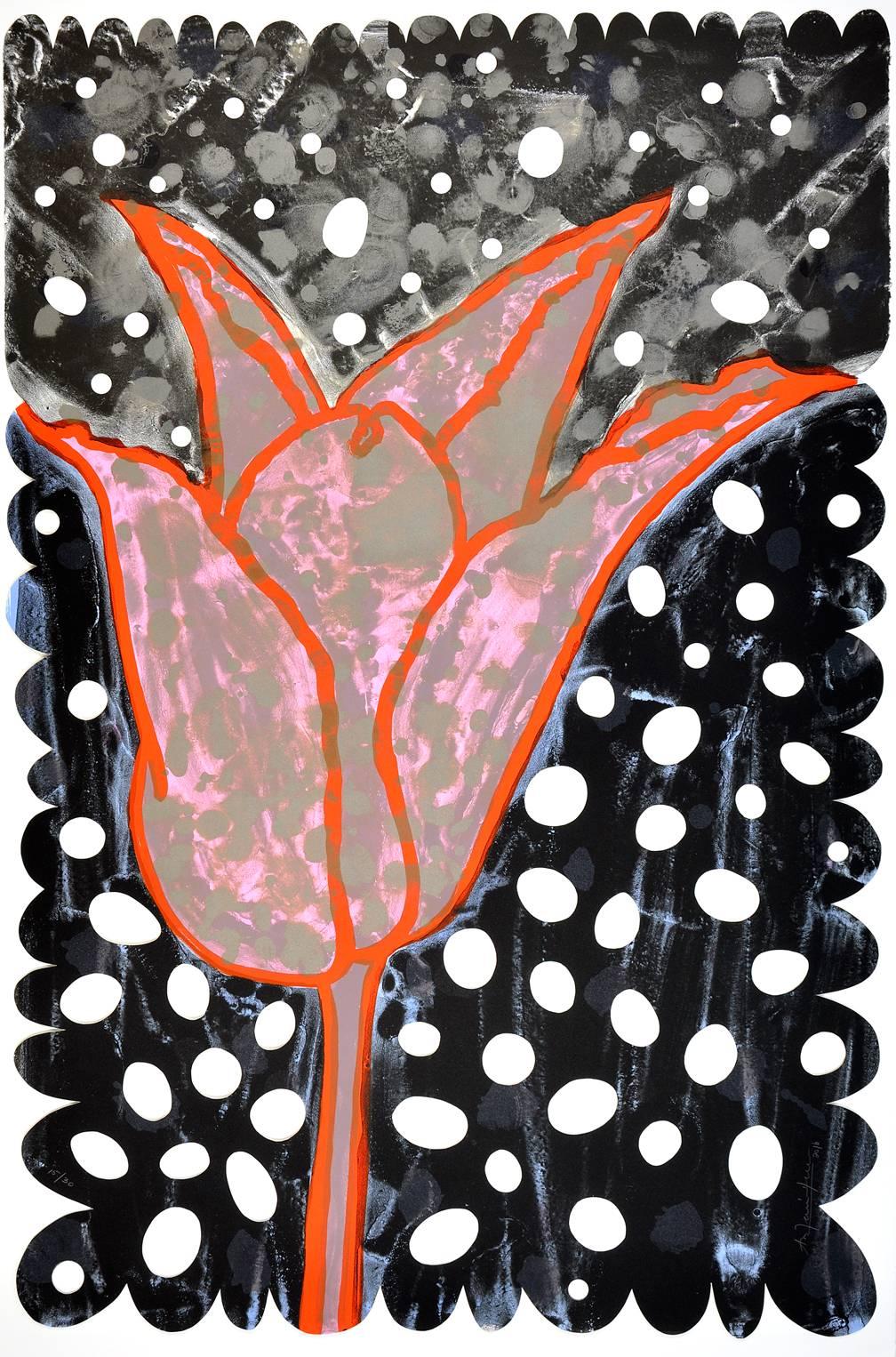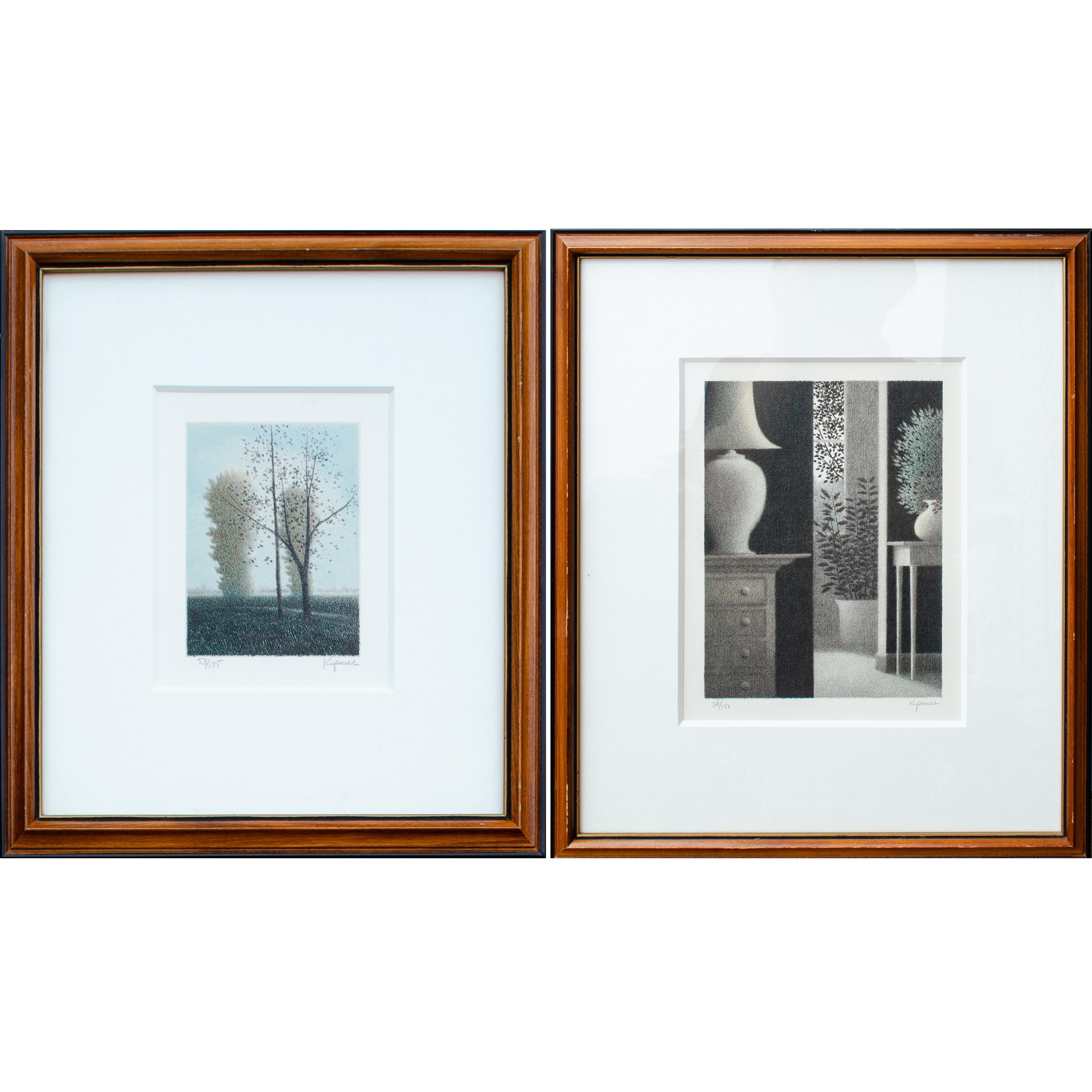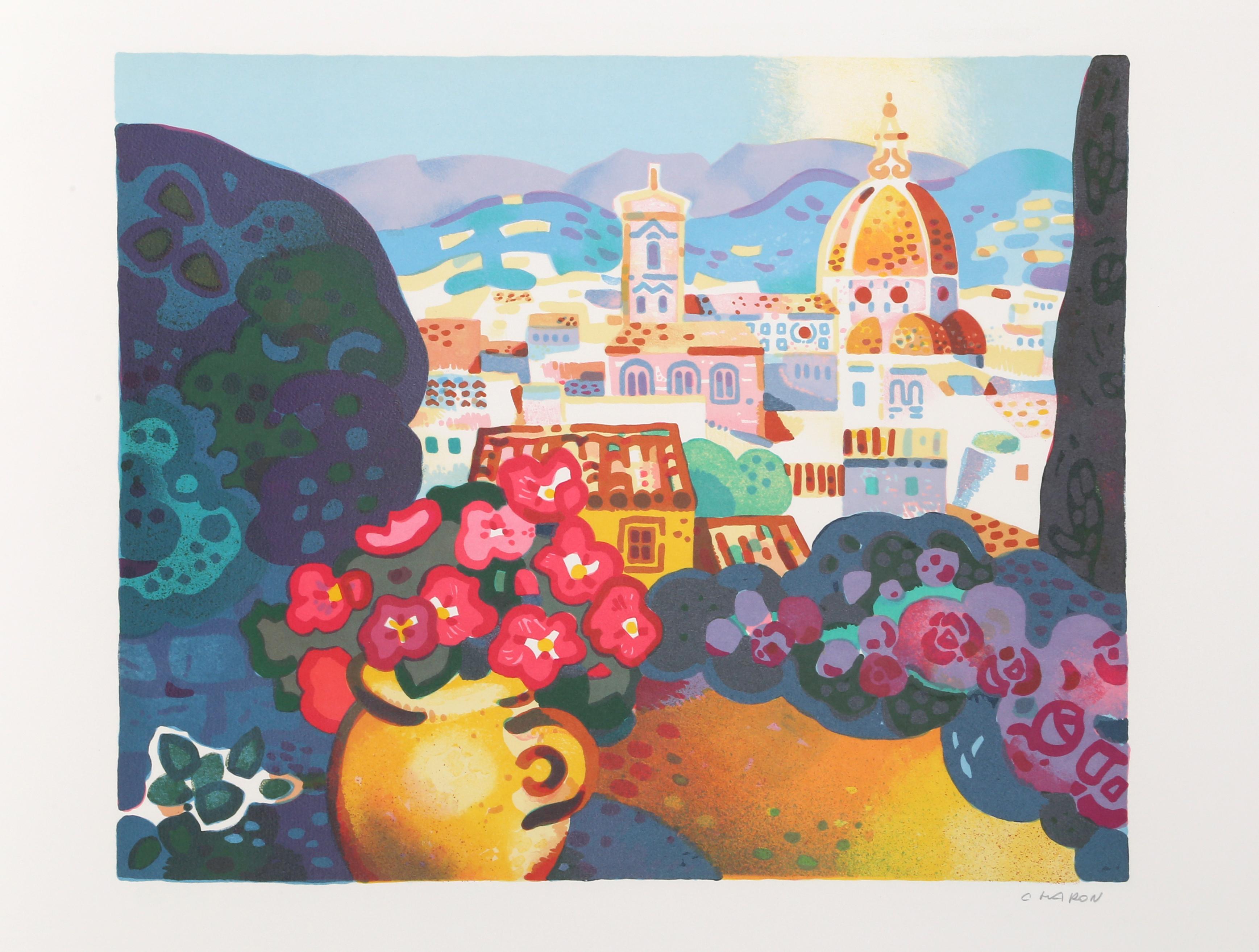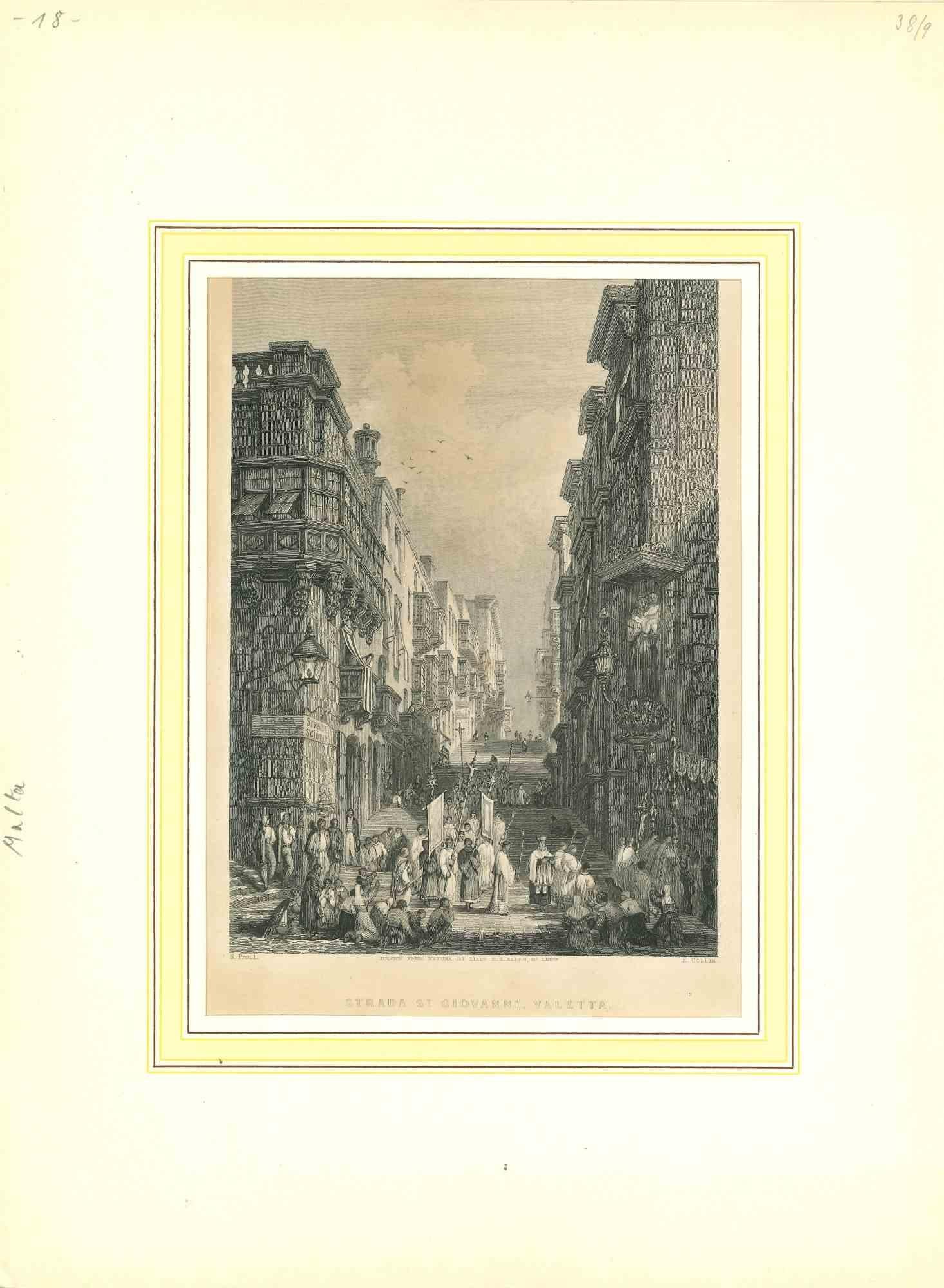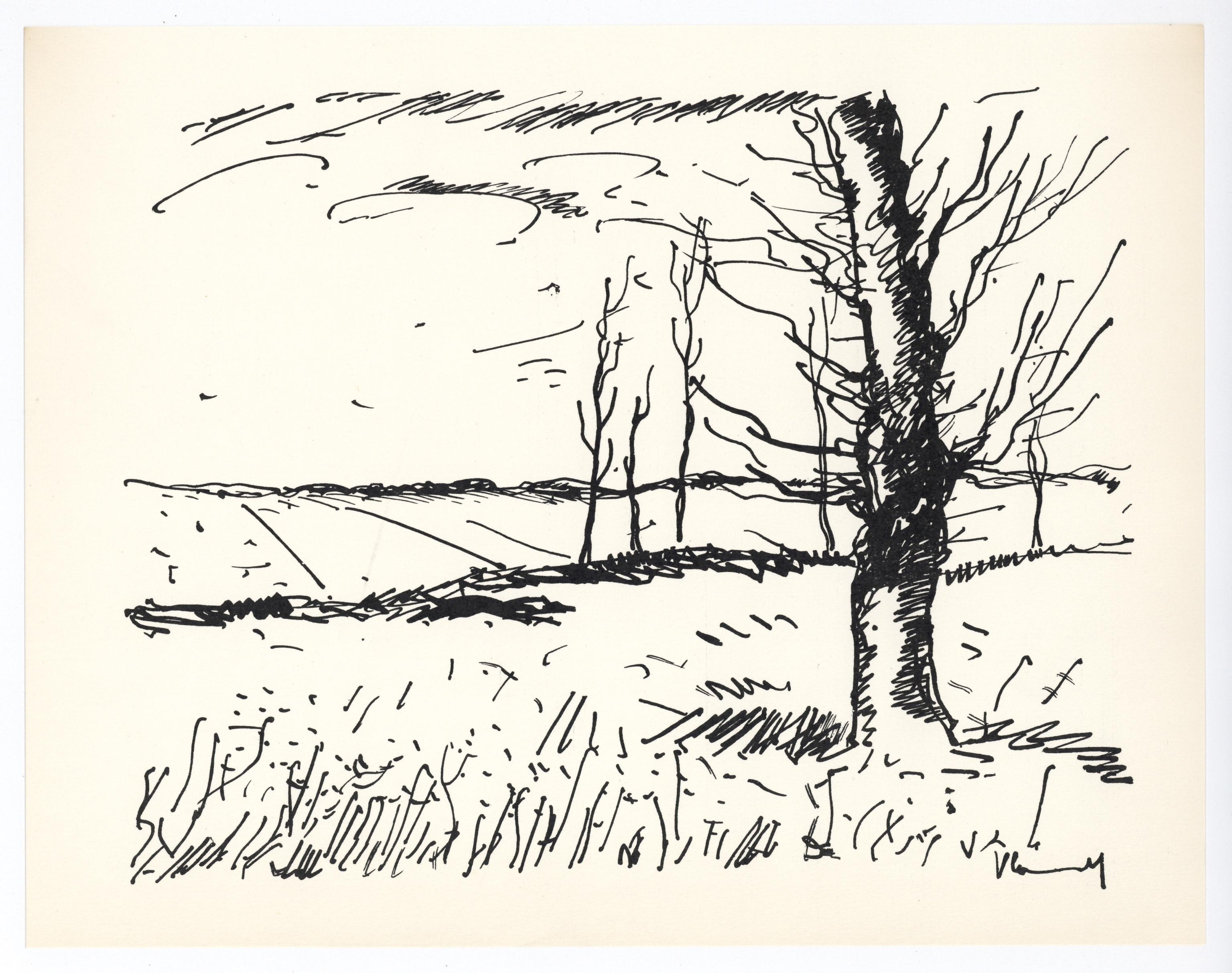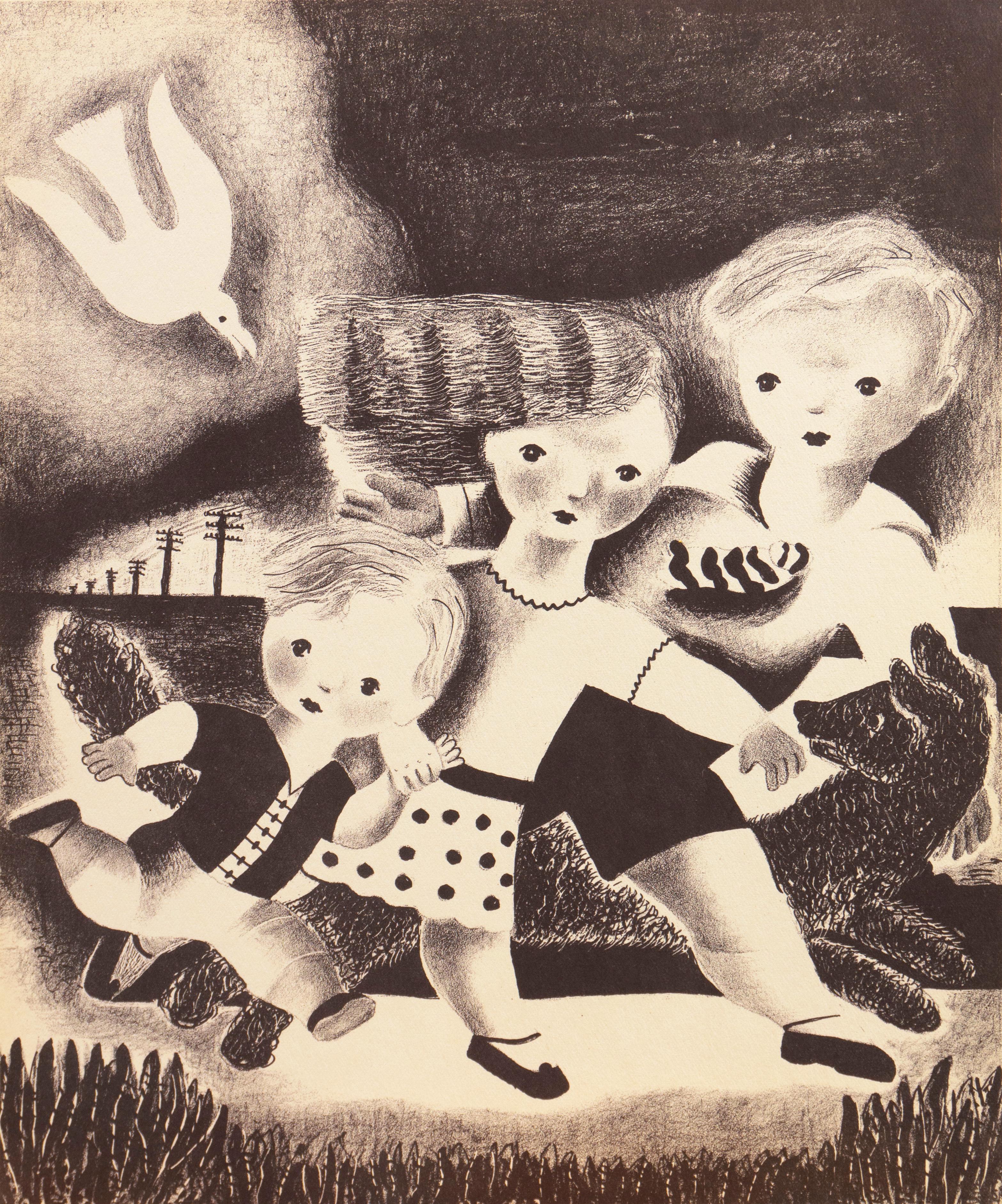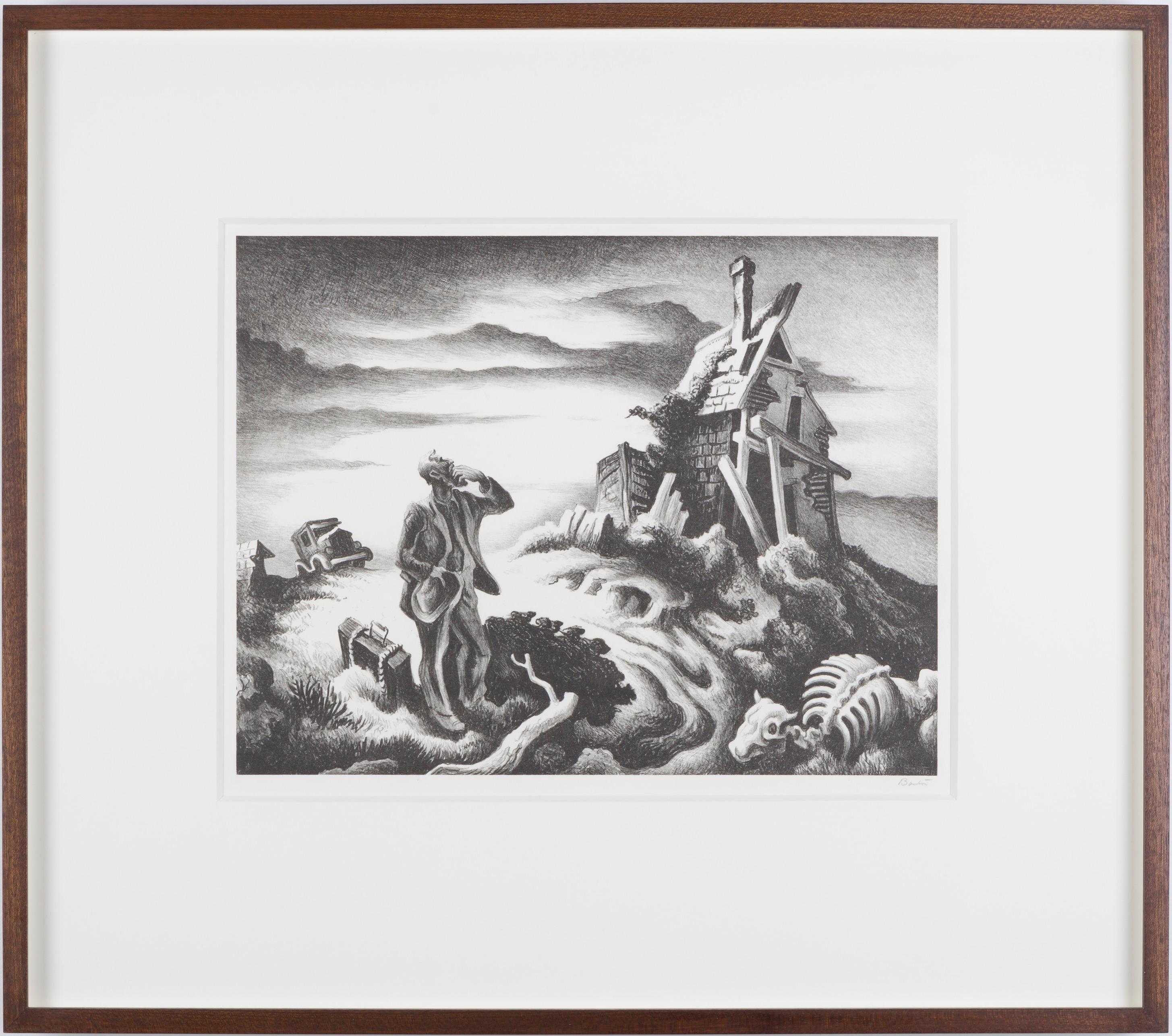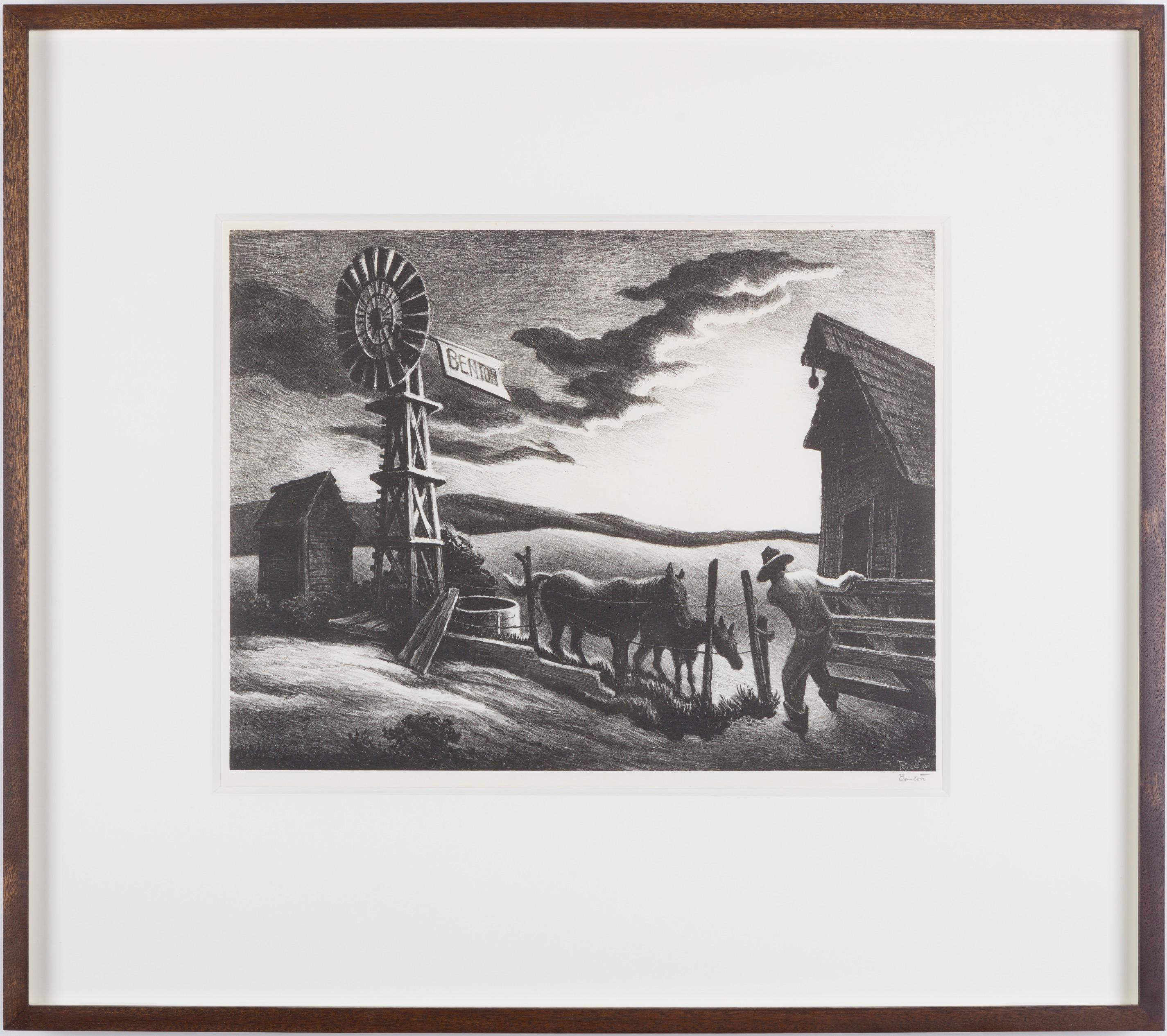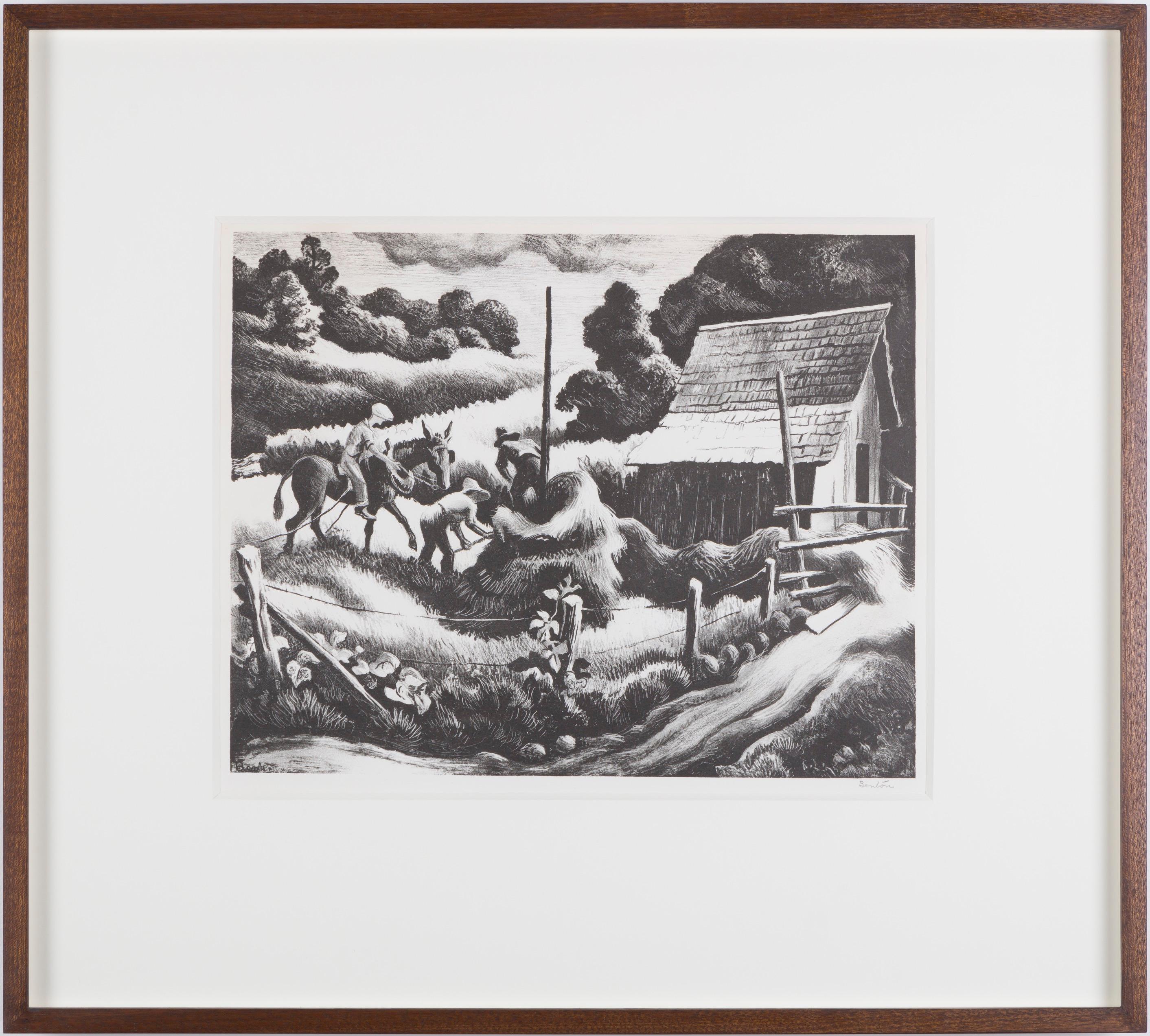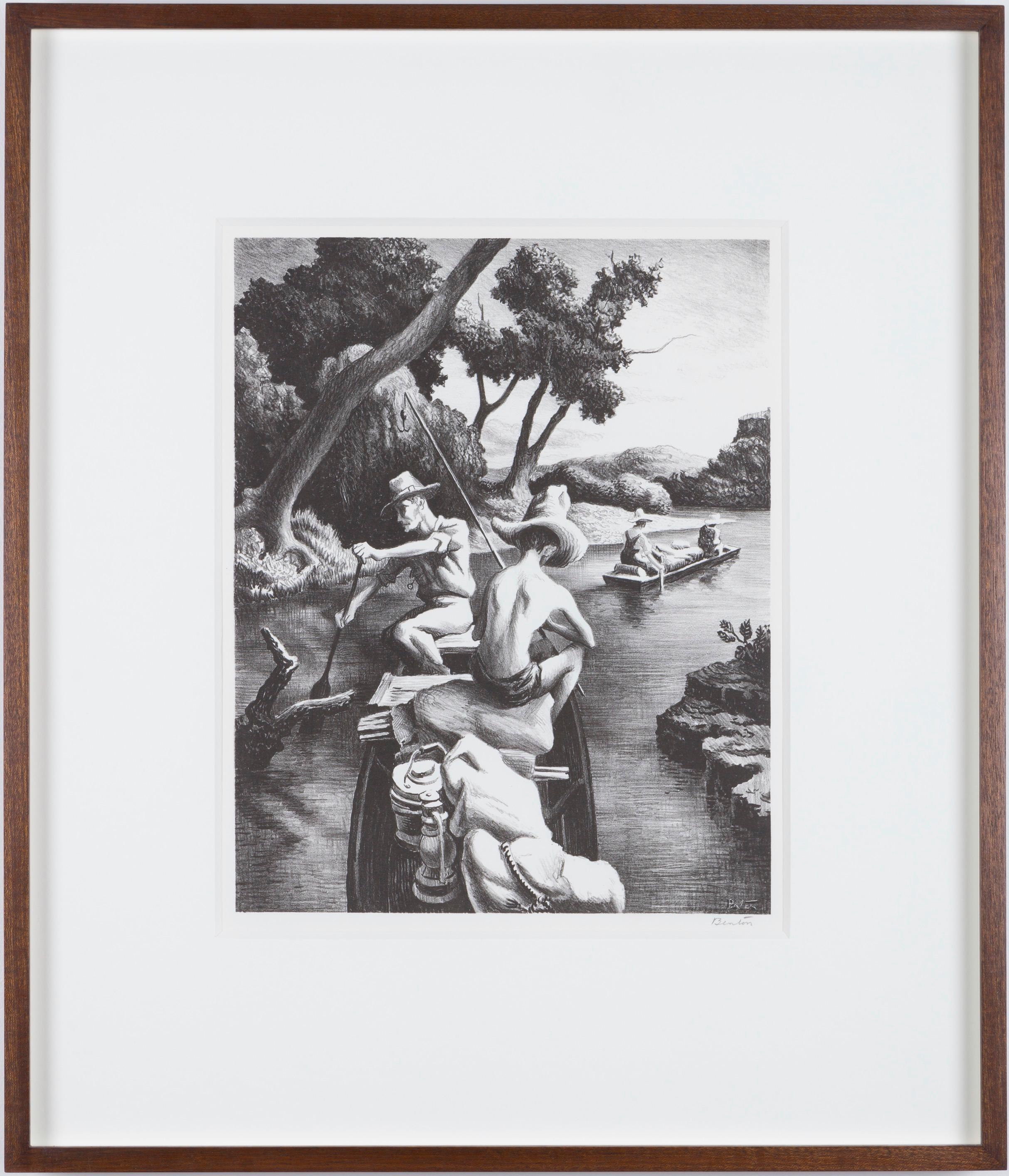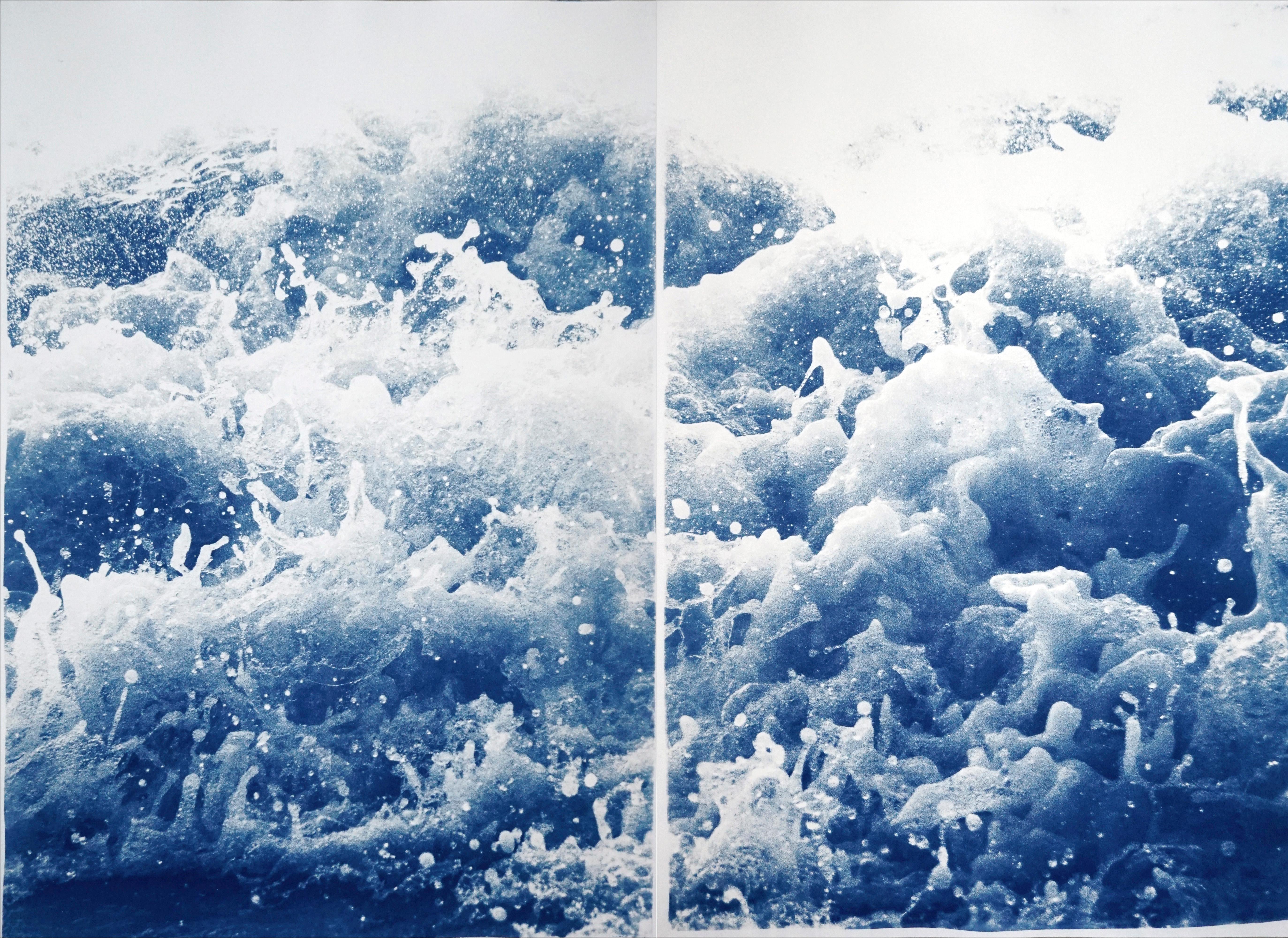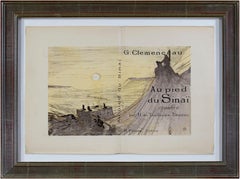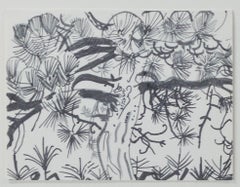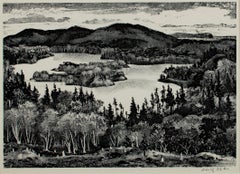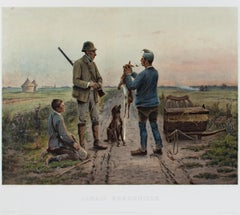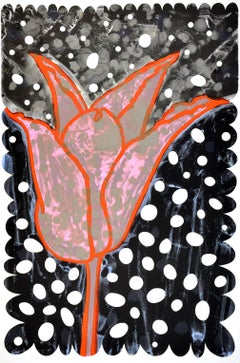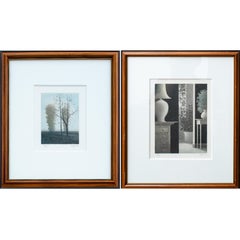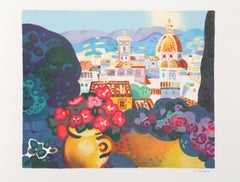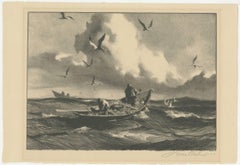
"Seagulls & Fishermen" Original Lithograph signed by Gordon Grant
View Similar Items
Want more images or videos?
Request additional images or videos from the seller
1 of 9
Gordon Grant"Seagulls & Fishermen" Original Lithograph signed by Gordon Grantc. 1940
c. 1940
Price:$900
$1,300List Price
About the Item
- Creator:Gordon Grant (1875 - 1962, American)
- Creation Year:c. 1940
- Dimensions:Height: 19 in (48.26 cm)Width: 22.125 in (56.2 cm)
- Medium:
- Period:
- Condition:
- Gallery Location:Milwaukee, WI
- Reference Number:Seller: 10708g1stDibs: LU60532098913
Gordon Grant
Born in San Francisco, Gordon Grant is known for his etchings and paintings of marine subjects. He also painted portraits, streets, harbors, beaches and marines, and was an illustrator, whose work included pulp fiction* for Popular Detective magazine in the 1930s. Skilled with watercolor, Grant was honored many times by the American Watercolor Society*. Memberships included the Society of Illustrators*, Salmagundi Club*, Allied Artists of America*, New York Society of Painters, and American Federation of Artists*. At age 13, he was sent to Scotland for schooling, and the four-month sail around Cape Horn remained a permanent influence on his career. He studied art in Heatherly and at the Lambeth School of Art* in London, and then in 1895, he became a staff artist for the San Francisco Examiner. The next year, he took the same type of job for the New York World and covered the Boer War for Harper's Weekly.
About the Seller
4.9
Platinum Seller
Premium sellers with a 4.7+ rating and 24-hour response times
Established in 1966
1stDibs seller since 2017
435 sales on 1stDibs
Typical response time: 2 hours
Authenticity Guarantee
In the unlikely event there’s an issue with an item’s authenticity, contact us within 1 year for a full refund. DetailsMoney-Back Guarantee
If your item is not as described, is damaged in transit, or does not arrive, contact us within 7 days for a full refund. Details24-Hour Cancellation
You have a 24-hour grace period in which to reconsider your purchase, with no questions asked.Vetted Professional Sellers
Our world-class sellers must adhere to strict standards for service and quality, maintaining the integrity of our listings.Price-Match Guarantee
If you find that a seller listed the same item for a lower price elsewhere, we’ll match it.Trusted Global Delivery
Our best-in-class carrier network provides specialized shipping options worldwide, including custom delivery.More From This Seller
View AllToulouse Lautrec Original Lithograph Famous Political 1800s Collection Signed
By Henri de Toulouse-Lautrec
Located in Milwaukee, WI
"Lautrec Book: From Au Pied du Sinai written by Georges Clemenceau" lithographs created by the legendary Henri de Toulouse-Lautrec. This book, Au Pied...
Category
1890s Post-Impressionist Figurative Prints
Materials
Mulberry Paper, Lithograph
"Pine Tree, " Offset Black & White Lithograph by Ruth Grotenrath
By Ruth Grotenrath
Located in Milwaukee, WI
"Pine Tree" is an offset lithograph by Ruth Grotenrath, created for the Riveredge Nature Center, Inc. for their Artists for Conservation series. It depicts an elaborate drawing of a pine tree with branches growing in multiple directions and overlapping one another.
5" x 6 5/8" art
13 5/8" x 15 1/4" frame
"The paintings of Ruth...
Category
1960s Expressionist Landscape Prints
Materials
Lithograph
20th century lithograph black and white landscape print trees lake signed
By Adolf Dehn
Located in Milwaukee, WI
"Peaceful Cove - New England" is an original lithograph by Adolf Dehn. The artist signed the piece lower right. It depicts an aerial view of New England.
9 1/2" x 13" image
11" x 15" paper
17" x 20 5/8" frame
Adolf Dehn was born in Minnesota, November 22, 1895 and he died in New York City, May 19 1968.
He was one of the most notable lithographers of the 20th century. Throughout his artistic career, Dehn participated in and helped define some important movements in American art, including Regionalism, Social Realism, and caricature. He was known for both his technical skills and his high-spirited, droll depictions of human foibles.
Biography
Dehn was born in 1895 in Waterville, Minnesota. Dehn began creating artwork at the age of six and by the time of his death had created nearly 650 images.
After high school he went to the Minneapolis School of Art, known today as the (Minneapolis College of Art and Design) where he met Wanda Gág...
Category
1940s Realist Landscape Prints
Materials
Lithograph
Late 19th century color lithograph figures dog rabbit landscape cart haystacks
By Jules Denneulin
Located in Milwaukee, WI
"Jamais Bredouille (Never Empty-Handed)" is a color lithograph after Jules Denneulin. It depicts a hunter showing his day's work to a farmer on a path at dusk.
20" x 26" art
40 1/4...
Category
1880s Realist Figurative Prints
Materials
Lithograph
'Lieutenant Crovers Despatch – Return of Governor Stevens to Fort Benton'
By John Mix Stanley
Located in Milwaukee, WI
In the mid-nineteenth century, the United States government set out to survey and document its newly acquired lands and territories west of the Mississippi. The goals of these surveys were manifold: to produce topographical maps, to document flora and fauna, and to document natural resources to build the emerging US economy. These surveys, and the images from them, also functioned to build the new sense of American identity with the landscape, condensing vistas into the 'picturesque' tradition of European image making. Thus, the entire span of US territory could be seen as a single, cohesive whole.
This lithograph comes from one of six surveys commissioned by the Army's Topographic Bureau in 1853, which sought to find the best route to construct a transcontinental railroad. The result was a thirteen-volume report including maps, lithographs, and technical data entitled 'Explorations and Surveys to ascertain the most practicable and economical route for a Railroad from the Mississippi river to the Pacific Ocean.' In particular, the print comes from the northern survey, commanded by Isaac Stevens, which explored the regions between the 47th and 49th parallels.
5.75 x 8.75 inches, image
6.5 x 9.25 inches, stone
17 x 20 inches, frame
Artist 'Stanley Del.' lower left
Entitled 'Lieutenant Crovers Despatch – Return of Governor Stevens to Fort Benton' lower center margin
Publisher 'Sarony, Major & Knapp. Lith.s 449 Broadway N.Y.' lower right
Inscribed 'U.S.P.R.R. EXP. & SURVEYS — 47th & 49th PARALLELS' upper left
Inscribed 'GENERAL REPORT — PLATE XXXVII' upper right
Framed to conservation standards using 100 percent rag matting with French accents; glazed with UV5 Plexiglas to inhibit fading; housed in a gold reverse ogee moulding.
Print in overall good condition; some localized foxing and discoloration; minor surface abrasions to frame.
John Mix Stanley...
Category
1850s Romantic Landscape Prints
Materials
Lithograph
"Traveling on the Liverpool & Manchester Railroad, 1831, " Raphael Tuck & Son
Located in Milwaukee, WI
"Traveling on the Liverpool & Manchester Railroad, 1831" is a color lithograph by Raphael Tuck & Sons. It depicts two trains carrying various cargo.
8" x 24 1/2" art
17 1/2" x 33 3...
Category
1890s Other Art Style Landscape Prints
Materials
Lithograph
You May Also Like
Wrapped Trees, Switzerland poster (Hand Signed by Christo and Jeanne-Claude)
By Christo and Jeanne-Claude
Located in New York, NY
Christo and Jeanne-Claude, Christo, Javacheff Christo
Wrapped Trees, Switzerland (Hand Signed by Christo and Jeanne-Claude), 1998
Offset lithograph poster (Hand Signed)
Signed Christ...
Category
1990s Pop Art Landscape Prints
Materials
Offset, Lithograph
Flores para la Ñusta II
By Ana Maria Hernando
Located in Lyons, CO
Color lithograph with cut outs, Edition 30.
Flores para la Ñusta translates as "Flowers for the Ñusta". The artist states:
"In the Andean cosmology, the Ñusta is the feminine ...
Category
21st Century and Contemporary Contemporary More Prints
Materials
Lithograph
2 Lovely Robert Kipniss Lithographs titled "Leaning" & "Interiors"
By Robert Kipniss
Located in New York, NY
Robert Kipniss (American, b. 1931)
Left:
Leaning, c. 1988
Lithograph
Sight: 5 1/4 x 4 in.
Framed: 11 x 9 3/4 x 3/4 in.
Numbered lower left: 53/175
Signed lower right: Kipniss
Right...
Category
1980s American Modern Landscape Prints
Materials
Lithograph
View of Florence, Modern Folk Lithograph by Guy Charon
By Guy Charon
Located in Long Island City, NY
View of Florence
Guy Charon, French (1927)
Date: circa 1975
Lithograph, signed and numbered in pencil
Edition of 250, EA
Image Size: 18 x 22 inches
Si...
Category
1970s Contemporary Landscape Prints
Materials
Lithograph
Strada St. Giovanni, Valetta - Original Lithograph - Early-19th Century
Located in Roma, IT
Strada St. Giovanni, Valetta is an original modern artwork realized in Italy in the first half of the 19th Century.
Original Lithograph on Ivory Paper.
Inscripted in capital lette...
Category
1850s Modern Figurative Prints
Materials
Lithograph
"Valley of the Avre" original lithograph
By Maurice de Vlaminck
Located in Henderson, NV
Medium: original lithograph. Printed in Paris in 1958 at the Mourlot atelier, and published by Andre Sauret in an edition of 2000. Size: 9 1/2 x 12 1/4 inches (242 x 310 mm). Signed ...
Category
1950s Landscape Prints
Materials
Lithograph
Recently Viewed
View AllMore Ways To Browse
Gordon Grant Lithograph
Vintage Boy Scout
Vintage Posters Ww1
Bronze Abstract Horse
Bronze Cowboy
Cat Stone Sculpture
Phillips Bronze Sculpture
Sculpture Cake
1940s Male Nude
African American Art Pen Drawing
California Highway Signs
Flaming Heart
Mardi Gras
Marilyn Monroe Poster
Nick Morris
No Smoking Sign
Russian Wood Box
Sculpture Nike

